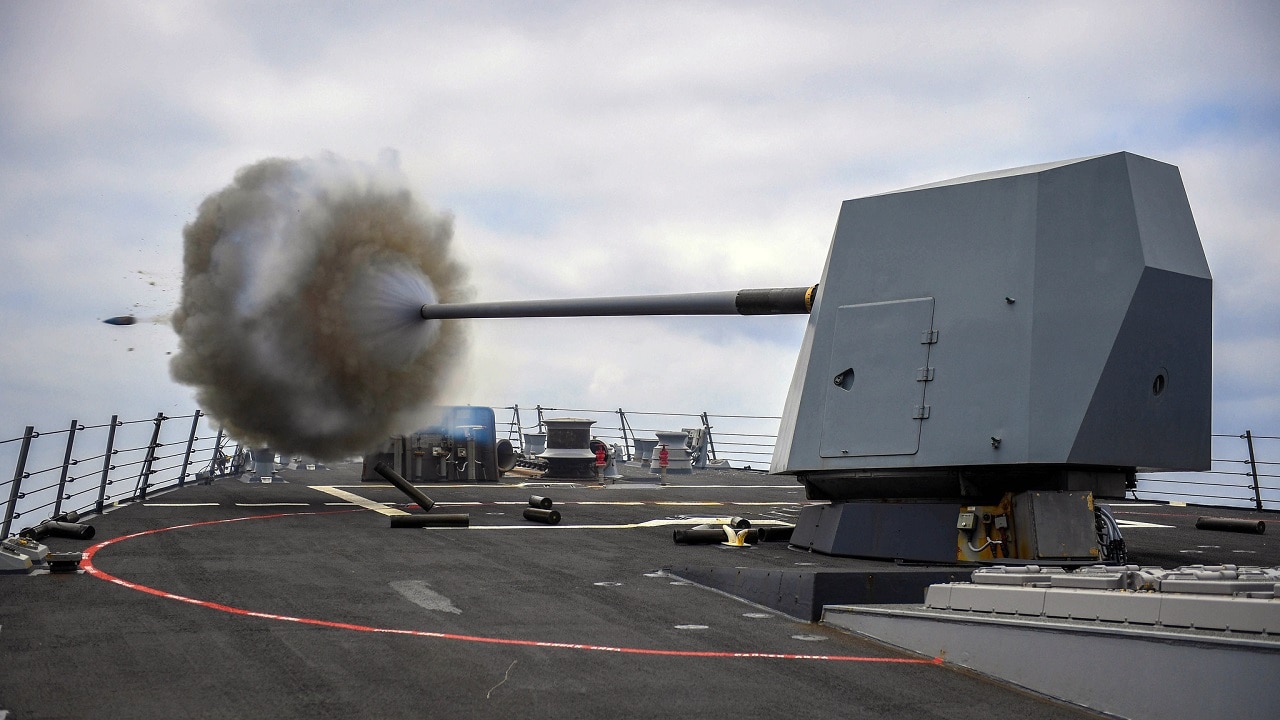Railguns are out. The US Navy has big plans for lasers and hypersonic missiles –Fifteen years and $500 million later, the U.S. Navy has put the kibosh on an important railgun program.
The railgun was meant to change naval combat. It was developed to shoot projectiles at remarkable speeds to eliminate enemy shipping in a re-imagined manner. This summer, the Navy removed all funding for the railgun from its latest budget proposal and indefinitely paused the program. The idea is to focus more on producing lasers and hypersonic weapons.
What is a Railgun?
The U.S. Navy was looking for alternative styles of weapons, one of which was the use of electromagnetic railguns. Functioning as a large electrical circuit without gun powder, they send a kinetic energy warhead 5,000 miles per hour or MACH 7.5 at 20 to 32 megajoules with a range of 110 miles. At these speeds, railguns could have defended against cruise missiles and ballistic missiles. These are valuable capabilities in the South and East China Sea since the Chinese have an enormous amount of shore-based cruise and ballistic missiles that are aimed at U.S. naval warships near the coast of China.
The weapon produces 1,200 volts in ten milliseconds which makes a pulse-forming network. This results in a network of capacitors that will release the energy to propel the projectile. The projectile weighs 45 pounds and accelerates to 5,000 miles per hour in an astonishing one one-hundredth of a second. This is three times the speed of conventional weapons. Since the warhead is made up of kinetic energy, it does not use explosives. The ultra-high-speed enables the warhead to knock out cruise missiles and ballistic missiles with kinetic energy. The railgun can fire at a rate of 10-rounds per minute at a cost of $25,000 per round.
Maybe the Railgun Could Evolve?
Another development for the Navy is that the guided projectiles used in railguns could also be fired from a conventional powder gun. This program is called “gun-launched guided projectile.” These projectiles do not fly as fast as the rounds fired out of the railgun, but they would take advantage of existing military weapons. In other words, the guided projectile could be fired from already existing conventional land-based howitzers and shipborne powder guns.
The Case to Keep the Railgun
The railgun would have taken at least five more years to develop, and the research and development required were always subject to navy priorities and the ebb and flow of Congressional funding. The railgun wasn’t yet ready to be deployed on U.S. Naval ships and it only received $9.5 million of funding for the fiscal year 2021. But the navy originally saw its value, especially in air defense, to defend its shipping in dangerous potential conflict zones in the Middle East and East Asia.
I don’t agree with the Navy pausing this program. The Navy put too much time and money on it to say goodbye. The railgun is a great idea in concept and could have been a difference-maker in a potential naval battle against the Chinese or Russians. The railgun fits in nicely with the stealthy Zumwalt-class destroyer, lasers, and hypersonic weapons. It is a stand-off weapon – a form of warfare that is coming more in vogue. The railgun could also defend against incoming missiles.
Maybe it’s not dead yet. It could come back under a different administration, a new Chief of Naval Operations, or if Congress flips over to the Republicans after the 2022 midterm elections.
1945’s new Defense and National Security Editor, Brent M. Eastwood, PhD, is the author of Humans, Machines, and Data: Future Trends in Warfare. He is an Emerging Threats expert and former U.S. Army Infantry officer.

